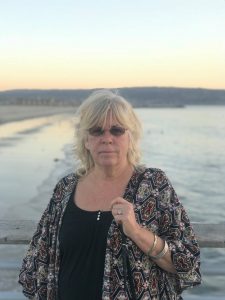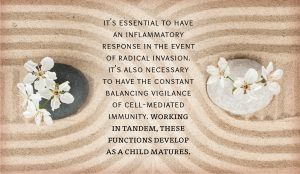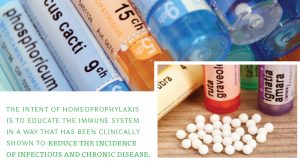 Jeanne Ohm, DC 1956-2019
Jeanne Ohm, DC 1956-2019
We publish this article in honor of Jeanne’s life and contribution to society. She was a powerful and inspirational healer who was familiar with the intelligence of life and accessed her intuition to live to the fullest. Her establishment of the ICPA touched millions of lives and her interview in The Quest for Real Immunity will be an opportunity for many more to learn from her amazing spirit. Cilla was fortunate to have this article originally published in the ICPA magazine, Pathways, in 2015.
Lily was my third child. She was born in China, in the city of Jiujang, in Jiangxhi Province. She was 10 months old when we traveled to get her, and weighed a mere 10 pounds.
Lily was beautiful. She was more like a newborn than a 1-year-old. She could barely hold up her head and was so accustomed to being heavily swaddled in layers of clothing that she cried when the air touched her skin the first time we carefully unwrapped her. Her tiny features were so delicate. She was as quiet as a mouse. She slept through the night without a peep. She was perfect. We bought a few yards of cotton cloth, which we tied in a knot and draped over my husband’s shoulders to create an impromptu sling. She snuggled inside, as content as a baby roo.
Looking back, I can see that Lily was suffering from “failure to thrive,” or the lack of weight gain and physical growth that many orphans suffer when inadequately nurtured and underfed. Combine this with a challenged immune system and the trauma of leaving the familiarity of the orphanage, and you have a child who is very vulnerable.
Once we were home, the pediatrician suggested that Lily needed her vaccines; the Chinese records could not be trusted. Having never questioned vaccines before, I agreed, and Lily was given her DPT, hepatitis B, polio, and MMR shots. What I know now is that this amounts to eight separate disease agents at once, not to mention the additives in each injection. A chemical cocktail.
Shortly afterward, Lily’s leg swelled to twice its size. She became more and more agitated, crying loudly. She let out long, woeful shrieks, and nothing soothed her. Her temperature was 103° F and rising. She was clearly in great distress and I ran her back to the pediatrician, who diagnosed her with aseptic meningitis, an inflammation of the membrane covering the brain and spinal cord. She was given IV antibiotics and her fever continued to climb to about 105° F. I tried to accept the fact that she might die; I spent the next 48 hours holding her warm, limp body and praying.
This was in 1996 and we were living in the Marshall Islands. The Internet was not yet a common addition to every home. I did have a Merck Manual, though. First published in 1899, The Merck Manual of Diagnosis and Therapy is a concise and complete medical reference for doctors, medical students and healthcare professionals. It’s is one of the world’s most trusted medical references.
From its pages I read: “Disorders and drugs are common causes of meningitis. Disorders that most commonly cause meningitis include disorders that cause inflammation, including the inflammation that occurs when the body’s immune system malfunctions and attacks the body’s own tissues (autoimmune disorders).” Among the culpable drugs listed are vaccines.
Eager for validation, back I went to the pediatrician, armed with my information, certain she would agree that I had unearthed the actual cause of Lily’s illness. I was sadly mistaken. She informed me with complete confidence and authority that there was no connection whatsoever to the vaccines. Completely impossible. And furthermore, she delivered a terse lecture on the horrors of children dying from communicable diseases and how she had seen these horrors in the field. End of conversation. I was speechless.
Lily survived that episode, but she struggled with high fevers throughout her youth, and the effects of those struggles are still with her. In the months and years that followed, I underwent a total reorganization of my belief system. The stark realization hit me that no one was going to look out for my kids as I do. It was up to me. Others may be motivated by adherence to their education, dogma, pride, or even just putting in their eight-hour work day. My children were my 24-hour responsibility. They depended upon me to be there, to know what to do and to do it right.
The responsibility felt overwhelming, but at the same time somehow empowering. I wasn’t going to trust what someone else told me without doing my own research ever again. I was through being a conventional medicine groupie. My choices eventually led me back to school, where I spent four years earning a degree in homeopathic medicine. It was there that I learned more about how the healthy immune system operates.
What’s Immunity?
The human immune system is amazing. Think of the intelligence it reflects. Day in and day out it offers protection from viruses, bacteria, parasites and rogue cancer cells. It creates a balance within our biological economy, knowing when to mount a response with fever, inflammation or discharges. And it knows when to simply do its work silently.
Another, more metaphysical way to view the immune system is as an overarching ability to accurately determine what is “self” and what’s “not self.” While the healthy, functioning immune system keeps us well physically, it also helps us in the ongoing process of clear boundaries, development of the personality, and differentiation between the natural parts and processes of the body and foreign interference. Quite an amazing process, really.
There is little distinction inside the womb, as the infant is attached by an umbilical cord to the mother. They exist as one. And Mother’s immunity continues to be passed on to the child after he is born through enzymes provided by mother’s milk.
The birth process is the beginning of differentiation into a separate being. Some have conjectured that the first three months of life, when mother and baby are still so closely connected through nursing, is actually akin to the “fourth trimester.” The baby cries, and magically the breast appears. He is tired or fussy, and there is Mother with warmth and comfort. There continues to be very little differentiation between “self” and “mother.”
Slowly, differentiation occurs. When uncomfortable, Baby discovers how to self soothe, perhaps with a thumb or by hearing soft music. He discovers siblings can be entertaining, or is fascinated by the family pet walking by. There is a world outside of himself and Mother.
At the same time, his immune system is becoming accustomed to new bacteria and viruses. Whatever he ingests first passes the mucous membranes of his mouth, throat and intestines. Here is where natural immunity begins. These tissues contain enzymes that are antibacterial. If these tissues are penetrated by pathogens, special cells called macrophages and neutrophils respond to engulf and kill the pathogens. This is Baby’s first encounter with what his body accepts as safe and what is rejected as unsafe.
Fast forward to around age 2, when Baby learns to say “No!” Coming into his personal power, he discerns that he is a separate person and can control what he wants and doesn’t want. He practices and practices until his parents almost lose their patience in the presence of junior exercising his ability to choose. He punctuates his newfound free agency with frequent exclamations of “Mine!”
This is just the beginning. The developing immune system continues to express itself through the maturation of social and intellectual skills in the pursuit of complete sovereignty. Any parent of a teenager can attest that 16-year-olds are wildly independent in one moment and completely dependent the next. Every leap of independence is another illustration of the immune system determining appropriate boundaries— physically, intellectually and socially.
Biologically Speaking
The biological explanation for this elegant system has two complementary functions: Th1 and Th2. Th1 is responsible for cell-mediated immunity, a response that does not dispatch antibodies, but instead activates phagocytes, antigen-specific cytotoxic T-lymphocytes, and the release of various cytokines in response to a disease substance. This enables the mounting of a fever in order to eliminate invaders. (This concept is discussed more in this blog.)
Th2 governs the antibody-mediated response, also called the humoral response (humor is an archaic medical term for body fluid). It identifies pathogens in the lymph fluid or blood and creates an inflammatory response to scavenge the offenders and eliminate them.
These two arms need to operate in a balanced way. It’s essential to have an inflammatory response (Th2) in the event of radical invasion. It’s also necessary to have the constant balancing vigilance of cell-mediated (Th1) immunity. Working in tandem, these functions develop as a child matures. Nature intended for us to possess both functions. Think of them as the 24-hour vigilance patrol accompanied by the emergency response team.
The goal of vaccines is to boost the emergency response (Th2) in order to enhance antibody production. In fact, vaccines contain chemical adjuvants (from the Latin word meaning “to help”) that are designed to facilitate the production of antibodies. Unfortunately, these two conditions already manifest increased inflammatory responses. Or consider the fact that whatever is contained in the vaccine ingredients will also, in the presence of an adjuvant, be perceived by the body to be a trigger to increase inflammation. So the peanut oil, antibiotics, aluminum, formaldehyde, MSG, and other chemicals that many vaccines contain may also elicit an allergic response when encountered in a child’s environment or diet.
Studies have shown us that skewing the Th1 and Th2 responses can compromise general immunity for the sake of specific antibodies. A 2012 study published in the Journal of Infectious Diseases stated, “Being protected against influenza, recipients may lack temporary non-specific immunity that protected against other respiratory viruses.”
It’s important to understand this complex protection from both Th1 and Th2 points of view, because true health is not just a matter of producing antibodies to specific diseases. Health occurs in human beings as a multifaceted process. The World Health Organization (WHO) defines health as “a state of complete physical, mental and social well-being, not merely an absence of disease or infirmity, with an ability to lead to a socially and economically productive life.”
In acute illness, we can see the relationship between biological illness and social, emotional and intellectual maturation quite clearly. When a child is sick and mounts a fever and has a discharge, we often see a developmental leap following resolution of the illness. Once well, they take a few wobbly steps, or learn to ride a bike, or master new words. When an older child resolves an illness, we can see leaps in independence or responsibility or problem-solving skills. Illness, maturation and the exercise of the immune system truly have an interdependent role.
Homeoprophylaxis:
Another Choice As a parent and as a healer, I take very seriously my commitment to “do no harm.” My deepest belief is that we are all motivated to heal. Healing takes place in a highly individualized manner. We cannot judge, predict or dictate how another will heal. Knowing this, I hold tremendous respect for others as they follow their individual paths. In my efforts to do no harm, and allow others adequate space while supporting their journey, I always try to choose the path of least risk.
Every decision we make for our children has consequences. Our fears far outweigh reality most of the time. I often tell my clients that if we possessed a crystal ball and could glimpse for even 10 minutes what the future held, we would sleep much more soundly at night.
The choice regarding whether or not to vaccinate can be a complex and difficult one for parents. The CDC has told us that “adverse events have been reported after administration of all vaccines.” Thus vaccines do carry “unavoidable risks.” My own path has led me through initially vaccinating my children, experiencing a vaccine injury with Lily, and then investigating an alternative called homeoprophylaxis.
Homeoprophylaxis has been utilized for more than 200 years for epidemics as well as endemic contagious disease. The application as an alternative to the recommended immunization schedule has been clinically studied since 1985 by Dr. Isaac Golden, Ph.D., of Australia. It’s a concept met with skepticism by some conventional medical practitioners due to lack of understanding. Golden is a pioneer, his studies providing emerging evidence of the effectiveness, ease and safety of the method. His work stands as the keystone to future applications of homeoprophylaxis for infectious childhood diseases.
Homeoprophylaxis is the use of diluted and potentized disease products, called “nosodes,” to elicit an immune response. While the original intent of vaccines was similarly to provide a weakened dose of the original disease, the most obvious difference today is the purity of homeopathic nosodes compared to conventional vaccines. Homeopathic nosodes contain no additives whatsoever. No antibiotics, preservatives, detergents, foreign DNA or unknown viruses are present. The intent of homeoprophylaxis is to educate the immune system in a way that has been clinically shown to reduce the incidence of infectious and chronic disease.
A very interesting finding of Golden’s work is the improved long-term health outcomes of using homeoprophylaxis for children compared to conventional vaccination. It seems that allowing exposure to the natural disease in energetic form carries this benefit without any of the risks. In regard to his findings, Golden wrote, “I would suggest that HP remedies stimulate the energetic immune response and this must lead to a maturing of the response in an analogous way that infection with simple diseases can help to mature the physical immune response.”
In other words, triggering an immune response at the energetic level, using homeoprophylactic remedies as opposed to material doses of disease antigen, plays a role in maturing the immune system. This is accomplished in a way that is similar to how nature operates in the developing immune system—gently and carefully, one disease at a time.
I’ve gone on to use homeoprophylaxis with my own children and countless others whose parents are looking for a safe alternative. I’ve met with Golden and others who have successfully applied homeoprophylaxis for epidemics in Australia, Cuba, India and countries in South America. In October 2015, Golden and other practitioners from around the world will be gathering to present their findings at a conference called “Homeoprophylaxis: A Worldwide Choice for Disease Protection.”
In most ways I’m just like you. I care deeply about my children and have struggled to make the right choices in raising them. We spend so many years protecting them, teaching them, guiding them, and keeping them safe from all the real and imagined dangers that lie in wait. Regardless of our careers or interests or occupations, our children are always in the forefront of our minds as we choose what to feed them, what to teach them, and what to protect them from or expose them to. It’s empowering to know there are ways to keep our children safe that are natural and nontoxic.
My greatest hope is that you will research homeoprophylaxis as a valid approach to keeping your children safe. Serious study will reveal its overwhelming usefulness.
Update: Lily is 19 now. She struggled for years with recurrent high fevers of around 105° F. It was as if her immune system was trying to gain traction but could not move through illness effectively. Homeopathic and chiropractic care helped immensely, and she can now mount an immune response and resolve illness efficiently. All that remains from her vaccine injury is a persistent speech impediment. Years of speech therapy did nothing to reverse damage that occurred during brain development and language acquisition. She has never been vaccinated again. Lily is now a college student and excelling academically; she was one of the fortunate ones.
